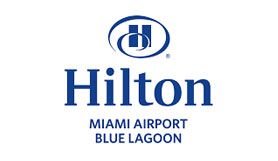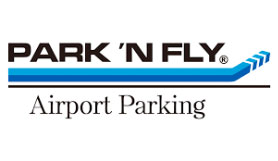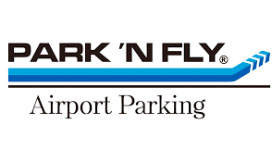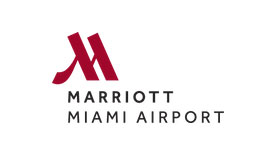Miami International Airport (MIA) is the primary long-haul airport for the South Florida region, with 40 million passengers traveling through it every year. Located perfectly for routes to South America and Europe, MIA has the highest percentage of international travelers in the country and handles more international cargo than any other airport.
Providing carriers like American Airlines with their main Latin American gateway, Miami International Airport is also a key city for American Eagle, Eastern Air Lines, UPS, FedEx, LATAM, Frontier and Avianca. In the past, it has acted as a hub for Pan Am, United, Braniff and Eastern Airlines.
As one of only eight American airports able to accommodate the Airbus A380, Miami Airport holds a strong position for continued growth. With routes already reaching across the Americas, Europe and much of Asia, it is also recognized as the primary travel connection between the USA and Latin America.
Location of Miami Airport
MIA Airport is located about eight miles (12.9 kilometers) west of Downtown Miami in Florida, directly serving local areas like Hollywood, Fort Lauderdale, Boca Raton, Hialeah and West Palm Beach. Found close to where the I-95 East Coast road ends, the airport is reached via intersections with the Airport Expressway and Dolphin Expressway toll roads.
Since it is so close to the city center, various public transport options are available to reach the airport, with bus services including the Miami Beach Airport Flyer, which shuttles from Miami Beach, and the Metrobus network with direct routes from Downtown Miami, South Beach, South Miami, Doral, Hialeah, Coconut Grove and Opa-Locka.
Rail services include Metrorail and Metromover routes from Hialeah, Downtown Miami and South Miami, as well as a Tri-Rail service from West Palm Beach, Boca Raton, Fort Lauderdale, Hollywood and Hialeah.
Which terminal?
Miami International Airport technically has three terminal buildings divided into six concourses, but those concourses are mostly referred to as individual terminals. The smaller spaces mean much less traveling within the airport to find the correct gate, but they also mean that some airlines have to be assigned to different terminals for departures and arrivals. See the table below to find out where you’ll need to go at MIA to find the right gate.
It’s a hub city for Avianca, LATAM Airlines and Frontier Airlines, whilst American Airlines and Eastern Air Lines are amongst the providers that use it as a hub for passengers.
The Volunteer Ambassadors at the airport can help you find your way and the Official Miami Airport Cell Phone App, which identifies 500 locations within the airport, is worth downloading. The airlines currently offering public flights to and from Miami Airport can be found on the Miami Airport website.
Make sure you plan your route for drop-offs and pick-ups
The road signs and layout on approach to Miami Airport are a constant source of frustration for drivers dropping off or picking up passengers, so it’s a good idea to look into it before you set off. Plan exactly where you need to be for your specific airline to ensure you don’t take a wrong turn and end up on the wrong side of the airport. You can use this map of MIA to help you.
It takes longer than you think to travel around MIA
Since Miami's terminal buildings are connected to one another, there is no rapid shuttle service that runs between them. Make use of the moving walkways, the Skytrain in the very long Terminal D and the train in Terminal E that takes you out to some of the farthest gates, but be aware that it will take you longer than you might expect in a large international airport.
It’s also possible to utilize the MIA Mover light rail system from the rental car center and bus and train station to get around, but even that is not a swift mode of transport.
Shortcut security to Terminal D
Terminal D is very large and has plenty of security checkpoints, but it's often extremely busy. Many people don't realize that Terminals D and E are connected post-security, so if the lines in Terminal D are long, it can sometimes be quicker going through security in Terminal E before walking back around to D.
It’s not the comfiest for sleepovers
People who have stayed overnight at MIA have said that the seating isn’t the most comfortable for sleeping on thanks to the fact that there are armrests everywhere. They’ve also stated that it gets cold and pretty noisy after the last flight of the day, so you might want to give extra consideration to a night in a nearby hotel instead of slumming it on the floor.
There are more overnight food options landside than airside
Whilst there is a 24-hour bagel shop to be found airside, there are plenty of around-the-clock concessions landside that will make sure you don’t go hungry or thirsty if you do decide to stay the night.
History of Miami Airport
Opened as Miami City Airport in 1920, the site grew rapidly as Pan-Am and the military developed neighboring plots of land, which all merged into a single facility after World War II. Early routes included non-stop flights to Chicago and Newark from 1946, although no route went beyond St Louis or New Orleans until the 1960s.
Operating for decades as a regional domestic airport, the addition of non-stop transatlantic flights to London in the 1970s led to a period of rapid growth. Air Florida flew a London route from a hub at MIA and a British Airways Concorde route ran from 1984 to 1991. The initial burst of transatlantic growth was further boosted as Eastern Airlines headquartered at the airport and American Airlines made it a hub, which meant that it quickly became one of the most important international gateways in the USA.
Continual investment through the 1990s and 2000s added terminals as passenger numbers passed 30 million, whilst rapid growth since the Great Recession has launched a new $651 million round of renovations to retain its status as a modern airport. Today, MIA remains important for links to Europe and Central America; somewhat unusually, it is one of the only airports in the USA to offer flights to Cuba, although they are primarily reserved for journalists and government officials.
)
)
)
)
)




